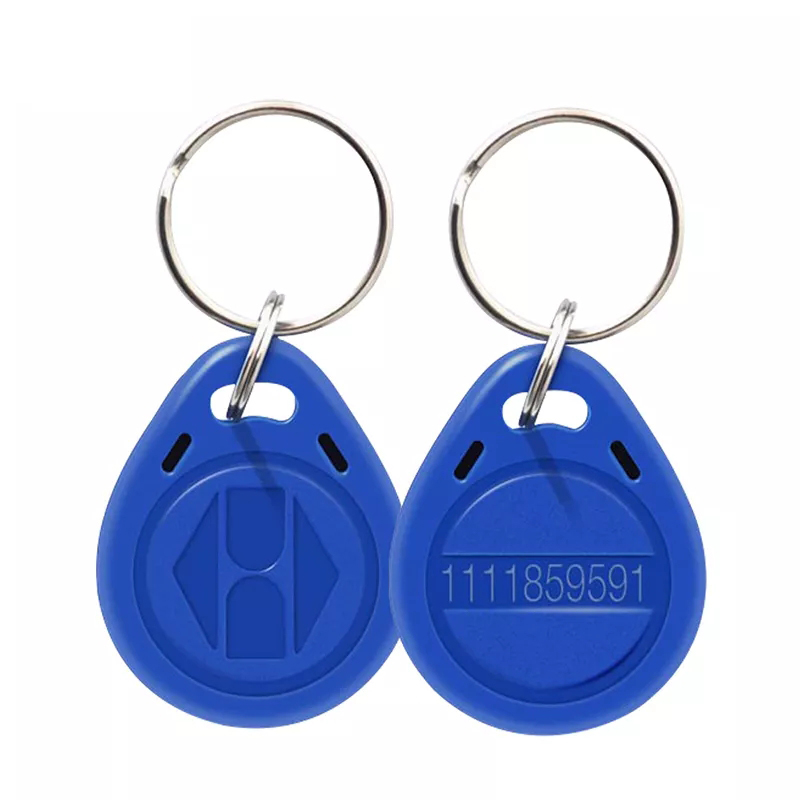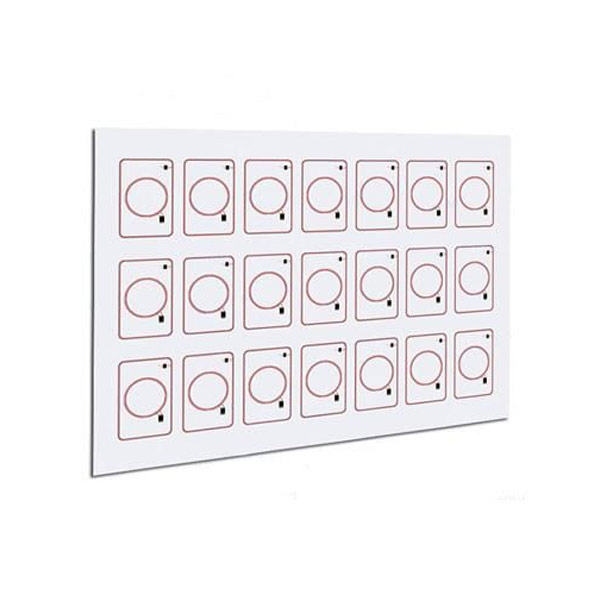Electronic tag is the common name of RFID, RFID is the abbreviation of Radio Frequency Identification, the term is radio frequency identification. Electronic tags, radio frequency tags, transponders and data carriers; readers are also known as readers, scanners, readers, readers, communicators and readers (depending on whether the electronic tag can rewrite data wirelessly).
Detailed technical information and application scope of the electronic label
Metal-resistant electronic tags Metal-resistant electronic tags
Electronic label can be divided into 125KHZ low frequency electronic label, 13.56MHz915 high frequency electronic labelMHz UHF electronic label, 2.45GHz microwave electronic label, 2.45GHz microwave electronic label, 5.8GHz microwave electronic label.
Electronic label system consists of three parts.
Electronic tag (Tag): each tag consists of coupling elements and chips, with a unique electronic code, high-capacity electronic tags with user-writable storage space, and attached to the object to identify the target object.
Electronic label reader (Reader): read (sometimes can also write) electronic label information equipment can be designed for handheld or fixed type.
Antenna (Antenna): radio frequency signal transmission between the tag and the reader.
The working principle of the electronic tag.
The basic working principle of RFID technology is not complicated: the tag enters the magnetic field, receives the radio frequency signal from the reader, and sends the product information stored in the chip (PassiveTag, passive tag or passive tag) through the energy obtained from the induction current, or actively sends the frequency signal (ActiveTag, active tag or active tag); the reader reads the information and decodes it, and sends the relevant data to the central information system.
RFID (radio frequency identification) system consists of two parts: read-write unit and electronic transceiver. The reader sends out electromagnetic pulses through the antenna, the transceiver receives these pulses and sends the stored information to the reader as a response. In fact, it is non-contact read, write or delete the data of the memory.
Technically speaking, the smart tag consists of RFID radio frequency part and ultra-thin antenna loop RFID chip RFID this antenna with a plastic sheet embedded in the tag. Usually, a paper tag is attached to this tag, and some important information can be clearly printed on the paper tag. Current smart tags are generally credit card size, small goods have 4.5 x 4.5cm there are also size tags CD and DVD diameter 4.7cm round tags.
Others, such as barcode or magnetic stripe ID with technology, the advantage of transceiver technology is the wireless link between the reader and the transceiver: the read-write unit does not require visual contact with the transceiver, so it can be fully integrated into the product. This means that the transceiver is suitable for harsh environments and is insensitive to moisture, dirt and mechanical influences. As a result, the transceiver system has high read reliability and fast data accessibility. This last point also saves labor and paper.
Electronic labels Electronic labels
Physical characteristics of electronic tags.
Data storage capacity is larger than traditional tags (1)byte-1024byte), data can be updated at any time, and can be read and written.
Reading and writing speed: compared with barcode, no linear scanning, reading and writing speed is faster, multi-target recognition, motion recognition.
Easy to use: small size, easy to package, can be embedded in products.
Security: electronic chip, unique serial number, difficult to copy.
Durability: no mechanical failure, long service life, harsh environment.
Core technology.
RFID radio frequency identification is a non-contact automatic identification technology. It automatically identifies the target object through radio frequency signal and obtains relevant data. Identification work can work in a variety of harsh environments, without human intervention. RFID technology can simultaneously identify high-speed moving objects and multiple tags, fast and convenient operation.
RFID electronic tag is a breakthrough technology.
First, can identify a very specific object, rather than like a bar code that can only identify an object.
Second, radio frequency can read data through external materials, bar codes must read information through the laser;.
Third, multiple objects can be read simultaneously, whereas bar codes can only be read one at a time. In addition, the amount of information stored is also large.
History of the development of electronic tags.
In 1937, the U.S. Naval Research Laboratory (NRL) developed the Identification Friend-or-Foe (IFF) system to distinguish Allied aircraft from enemy aircraft. This technology later became the basis for modern air traffic control in the 1950s. And it was the early RFID military, laboratory, and other technology germination priority.
The late 1960s and late 1970s generation and early 1970s (Electronic Article Surveillance (EAS)) The system was a common anti-theft system in shopping malls.
Early commercial applications, including rail and food traceability, were in the 1980s.
In the 1990s, standardization began to put forward the concept of EPC worlds only identification of each item.
China electronic label standard.
Chinas electronic label standard has been the focus of domestic and foreign attention, but also related to whether the rapid development of Chinas RFID industry as soon as possible to promote the core issues. June 26, 2006, Chinas electronic label group held in Beijing, the electronic label standard working group meeting was informed that after the joint efforts in 2007, put forward 13 recommendations.56MHz radio frequency identification tag basic electrical characteristics are 13.56MHz radio frequency recognition read-write specification RFID tag physical characteristics, three standard technical documents.
The preparation in 2008 includes 840-845MHz, 920-925MHz draft standard frequency, 13.56MHz radio frequency identification tag basic electrical characteristics test method, 13.56MHz radio frequency identification reader test method RFID tag physical characteristics test method of the draft standard. Ministry of Industry and Information Technology, Science and Technology Division, Product Division, the relevant competent leadership attended the meeting of the Working Group on electronic tags. The meeting was chaired by Ms. Zhang Qi, head of the working group on electronic tagging standards. At the meeting, the person in charge of each topic group comprehensively summarized the work in 2007 and reported the work of developing electronic labeling standards in 2008.
In the meeting concluded the speech of the conference leader in the meeting clearly pointed out that the standards of the electronic label and the conference related to RFID in the past year, we have done a lot of work in a realistic and pragmatic manner, and put a lot of effort. Although in the course of work encountered many problems, but China has a broad development RFID Therefore, the application market must develop their own standards. 2008 electronic labeling working group of each topic group must accelerate the work.
Attend the meeting of the industry and information technology in charge of industry and standards of the relevant departments and directors also said at the meeting, they will actively support the work of the Working Group on Electronic Tags to promote the rapid development of Chinas development of RFID industry. At the meeting, the electronic label working group issued a "notice on the release of the electronic label working group technical guidance documents" to accelerate the development of electronic label standards.
As a data carrier, the electronic label can play the role of identification, tracking items and collecting information. The electronic label has been widely used in foreign countries. By the electronic label, read-write, antenna and application software composed of RFID system directly connected to the corresponding management information system. Each item can be accurately tracked, and this comprehensive information management system can bring many benefits to customers, including real-time data collection, secure data access channels, and all product information in the offline state. In foreign countries, RFID technology has been widely used in industrial automation, commercial automation and other fields.
The scope of application of electronic tags in the industry includes
1.Anti-counterfeiting generates detailed logistics records through scanning.
2.Production line management
Electronic tags can easily and accurately record process information and process operation information on production lines to meet flexible production needs. Recording labor number, time, operation and quality inspection results can fully achieve production traceability. It can also avoid errors caused by handwriting and viewing information in the production environment.
3、Warehouse management
RFID the system for intelligent warehouse cargo management, effectively solve the problem of warehouse cargo information management. For large warehouse base, the management center can understand the location and storage of goods in real time, which is important to improve the efficiency of warehousing, feedback product information and guide production. It not only increases the number of goods handled in a day, but also monitors all information about the goods. Among other things, there are various forms of applications. The label can be affixed to the goods, read-write on the forklift and the warehouse corresponding position read-write; barcode and electronic label can also be used together.
4. Sales channel management
Many enterprises strongly need to establish strict and orderly channel, effective management purchase, sales and inventory. Products in the production process embedded in the electronic label, including the only




